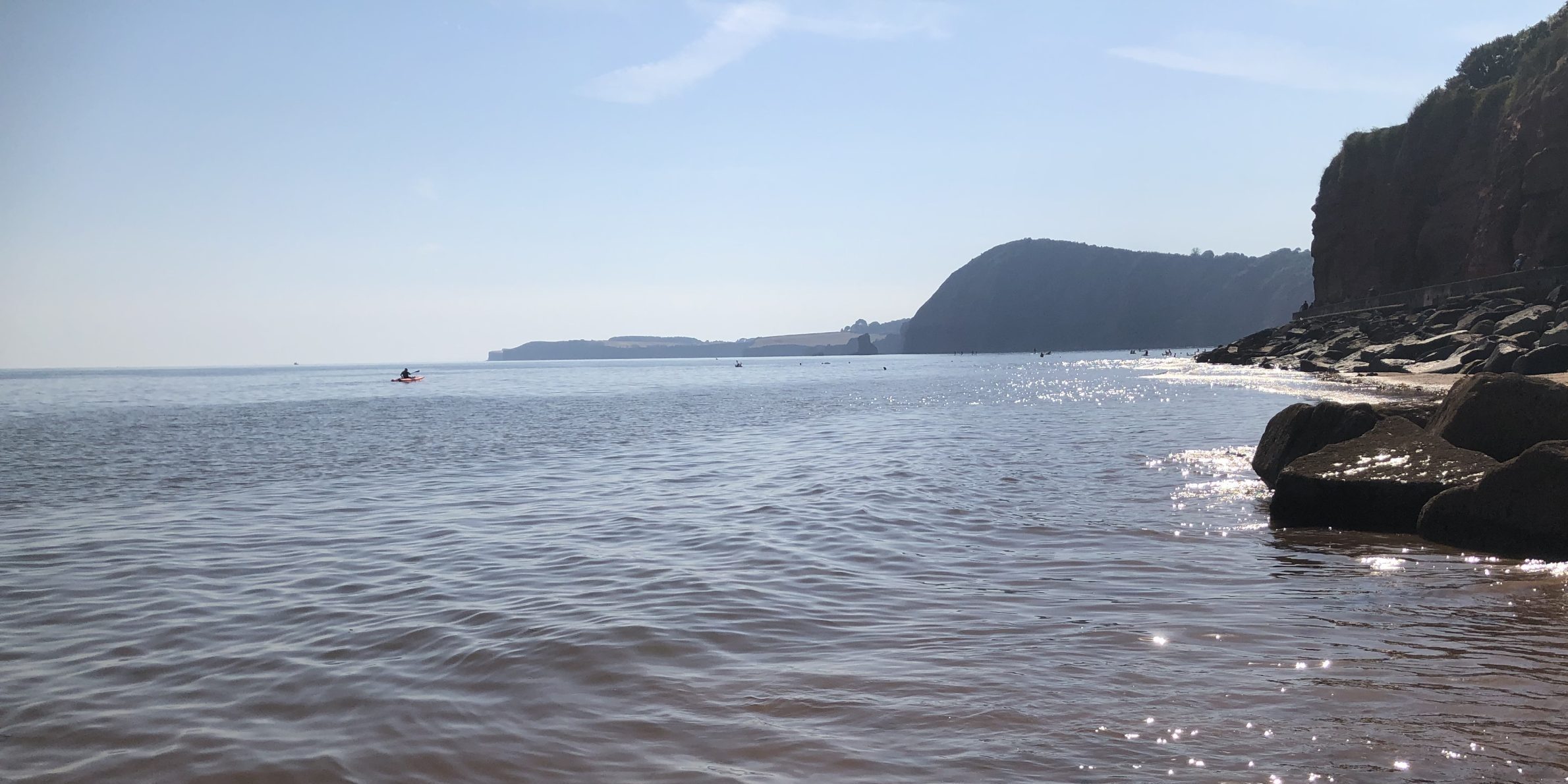 Richard Armitage is a GP and Public Health Specialty Registrar, and Honorary Assistant Professor at the University of Nottingham’s Academic Unit of Population and Lifespan Sciences. He is on twitter: @drricharmitage
Richard Armitage is a GP and Public Health Specialty Registrar, and Honorary Assistant Professor at the University of Nottingham’s Academic Unit of Population and Lifespan Sciences. He is on twitter: @drricharmitage
Alarming news reports depicting copious volumes of raw untreated sewage being actively discharged onto the beaches of storm-battered England have recently generated concerns for the safety of open water swimming. But what are the health benefits of this increasingly popular sport? What threats does pollution pose to its participants? And what are the consequences for general practice and public health?
The UK’s sewage system
The majority of the UK is covered by an elaborate sewage network that simultaneously deals with both rainwater and wastewater in the same interconnecting lattice of sewers and pipes. This combined sewage system, which was initially constructed in the Victorian era, collectively carries both precipitation run-off from roads and other surfaces, domestic effluence from bathrooms and kitchens, and industry wastewater from factories and plants to one of some 9,000 sewage treatment works across the UK.1 Each day, around 11 billion litres of wastewater from across the country are collected and carried through the 350,000 kilometres of sewers and pipes directly into these works, where they are subjected to primary treatment (the settling out of solid matter), secondary treatment (the usage of bacteria to breakdown organic substances), and tertiary treatment (the disinfection of water and removal of nitrophosphates), before the resulting effluent is discharged into inland lakes, rivers and the open sea.1
During episodes of particularly heavy rainfall, especially when the ground is especially dry and unable to rapidly absorb precipitation, the local capacity of this sewage system can become quickly overwhelmed. This risks the network becoming severely inundated and a subsequent overflow that causes homes, highways, and other open spaces to be flooded. This outcome can be avoided by directional spillage in which the additional water volume is channelled away from valuable assets and infrastructure prior to the completion of its various treatments. These combined sewer overflows (CSOs) act as safety release valves, the activation of which directs excess wastewater away from homes, businesses and vital infrastructure and directly into seas and open waterways instead. CSOs are a necessary part of the existing sewage system the serves to protect local communities and their property, and their usage is subjected to strict regulation.2 The Environmental Agency, which covers the sewage system in operation across England, issues permits for the usage of CSOs, requires water companies to monitor their usage of these overflows, and issues fines when they fail to meet specified requirements.3 For example, Southern Water was charged £90 million in 2021 for 6,971 illegal spillages, which collectively amounted to billions of litres of untreated sewage, directly into the sea across 17 sites in Hampshire, Kent and West Sussex between 2010 and 2015.4 The regulatory framework for CSO usage is intended to limit their deployment to prevent the disastrous impacts of rare extreme weather events. However, their usage has been revealed to be of incredible prevalence, as attested to by the discharge of untreated sewage into English rivers on over 200,000 occasions in 2019,5 and on more than 400,000 occasions in 2020.6 Use of CSOs on such unprecedented scale threatens severe risk of harm to both public and ecological health.
The rise of wild swimming
Open water, or ‘wild,’ swimming refers to any swimming that takes place outside a dedicated swimming pool, such as in lakes, rivers, and open sea bodies. The sport has seen a profound boost in popularity globally since the arrival of the COVID-19 pandemic, since this inherently outdoor and open air activity, which often takes place within organised groups, provides both a release from the loneliness of isolating lockdowns and a re-introduction to exquisite natural beauty.7 The absence of lifeguards, swimming lanes, and overcrowded pools promises an exhilarating experience that has triggered a three-fold increase in wild swimming participation across the UK since 2019.7 While the potential physical and mental health benefits reflect those of all forms of aerobic exercise, additional psychological health benefits specific to this form of swimming have been recently acknowledged, such as its potential high efficacy for treating major depression.8
However, in addition to the risks of accident and injury, which are substantially greater than in lifeguard-patrolled pools, open water swimming carries an increased risk of communicable disease transmission due to the untreated nature of the water in use. Norovirus, E. coli, giardia and cryptosporidium are responsible for many episodes of wild swimming-associated gastrointestinal infections, while other pathogens may induce respiratory, dermatological and ENT symptoms, and leptospirosis (Weil’s disease) may trigger severe deterioration in liver and kidney function.9
The Environmental Agency is responsible for monitoring and publicly reporting the quality of over 400 designated bathing sites across England, which is regularly updates on its online portal Swimfo,10 and provides annual classifications of each site’s performance as either excellent, good, sufficient or poor. The vast majority – over 95% – of these designated bathing sites are in costal locations, while only a handful correspond to inland lakes. Importantly, no rivers are managed for the purpose of protecting people, but only to the extend necessary to protect wildlife and ecology.9 Despite this, many inland lakes and interconnecting river systems are being increasingly used as wild swimming locations, therefore exposing participants to significant health risks, the impacts of which have been recently demonstrated by the reporting of gastrointestinal illnesses in wild swimmers of River Tweed11 and Eyemouth beach.12
The effects of recent weather events
The recent heatwave across north-western Europe, in which temperatures reached 40°C in the UK for the first time, was swiftly followed by torrential downpours that severely overwhelmed the country’s sewage system. The subsequent usage of widespread CSOs caused the discharge of enormous volumes of untreated sewage into waterways and beaches across various parts of Britain, and the consequent issuing of Health Agency pollution warnings.13 This sudden deterioration in the quality of Britain’s waterways posed a significant risk to the health of its wild swimmers, along with wild animal populations and interdependent ecosystems. Should changes in local and global climate patterns manifest as an increase in the frequency and intensity of future drought and rainfall events, the usage of CSOs will likely rise further, and thereby expose open water swimmers to on-going health risks.
What GPs should know
To harness the substantial health benefits offered by wild swimming participation, while minimising the potential harms inherent to this activity, GPs should be aware of three main points:
- While many coastal areas have designated bathing site status, rivers and inland lakes mostly do not, meaning the health risks of wild swimming are greater in these places.
- The Rivers Trust provides help and advice for wild swimmers who wish to swim in lakes and rivers to find those that pose lowest risk for participation in this activity.14
- Episodes of heavy rainfall, especially those following periods of dry weather, increase the likelihood of CSOs, and so wild swimming should be avoided as a rule during these times.
The health benefits of wild swimming appear to be sizeable, and so primary care and public health professionals should encourage safe participation in this exhilarating activity. A substantial threat to the safety of this sport is the discharge of raw sewage through CSO usage, which increases the risk of severe communicable disease of the GI tract and other systems. Accordingly, primary care and public health bodies, such as the Royal College of General Practitioners and Faculty of Public Health, should advocate for the urgent delivery of the recently announced government plan to reduce CSOs across all areas of England, which promises the “largest infrastructure programme in water company history” coupled with strict targets for the reduction of raw sewage discharge.15
References
- DEFRA. Sewage Treatment in the UK: UK Implementation of the EC Urban Waste Water Treatment Directive. 2002. https://assets.publishing.service.gov.uk/government/uploads/system/uploads/attachment_data/file/69582/pb6655-uk-sewage-treatment-020424.pdf [accessed 30 August 2022]
- Environment agency https://environmentagency.blog.gov.uk/2020/07/02/combined-sewer-overflows-explained/ent Agency. Combined Sewer Overflows Explained. 02 July 2022. [accessed 30 August 2022]
- GOV.UK. Water companies: environmental permits for storm overflows and emergency overflows. 13 September 2018. https://www.gov.uk/government/publications/water-companies-environmental-permits-for-storm-overflows-and-emergency-overflows [accessed 30 August 2022]
- BBC News. Southern Water fined record £90m for dumping raw sewage. 09 July 2021. https://www.bbc.co.uk/news/uk-england-kent-57777935 [accessed 30 August 2022]
- S Laville and N McIntyre. Water firms discharged raw sewage into England’s rivers 200,000 times in 2019. The Guardian. 01 July 2022. https://www.theguardian.com/environment/2020/jul/01/water-firms-raw-sewage-england-rivers [accessed 30 August 2022]
- D Brown. Sewage discharged into rivers 400,000 times in 2020. BBC News. 31 March 2021. https://www.bbc.co.uk/news/science-environment-56590219 [accessed 30 August 2022]
- N Moyle. Wild swimming UK 2022: essentials for starting open water swimming, from wetsuits, dryrobes, to tow floats. The Scotsman. 21 February 2022. https://www.scotsman.com/recommended/wild-swimming-uk-2022-3278126 [accessed 30 August 2022]
- C van Tulleken, M Tipton, H Massey, et al. Open water swimming as a treatment for major depressive disorder. BMJ Case Reports 2018; 2018: bcr-2018-225007. DOI: 10.1136/bcr-2018-225007
- GOV.UK. Swim healthy. 24 June 2019. https://www.gov.uk/government/publications/swim-healthy-leaflet/swim-healthy [accessed 30 August 2022]
- Environment Agency. Swimfo: Find a bathing water. https://environment.data.gov.uk/bwq/profiles/ [accessed 30 August 2022]
- D Knox. Sewage leak blamed for illness in River Tweed swimmers. BBC News. 12 August 2022. https://www.bbc.co.uk/news/uk-scotland-south-scotland-62523418 [accessed 30 August 2022]
- BBC News. Eyemouth beach swim warning after sewage pipe spill. BBC News. 14 July 2022. https://www.bbc.co.uk/news/uk-scotland-south-scotland-62153209 [accessed 30 August 2022]
- A Walsh. Water firms face growing criticism over beach sewage. BBC News. 22 August. https://www.bbc.co.uk/news/uk-62633559 [accessed 30 August 2022]
- The River Trust. Wild Swimming. https://theriverstrust.org/enjoy-rivers/wild-swimming [accessed 30 August 2022]
- C Marshall. Strictest targets pledged to tackle England sewage discharges. BBC News. 28 August 2022. https://www.bbc.co.uk/news/science-environment-62687856 [accessed 30 August 2022]
Featured image: Waters off Sidmouth beach, by Andrew Papanikitas, 2022







[…] British Journal of General Practice (BJGP) says that “open water swimming carries an increased risk of communicable disease transmission due to the […]
[…] British Journal of General Practice (BJGP) says that “open water swimming carries an increased risk of communicable disease transmission due to the […]
[…] Journal of General Practice (BJGP) He says. “Open water swimming increases the risk of infection due to the nature of the water […]
[…] the “three-fold increase in wild swimming participation across the UK since 2019 (to 2022)” into pretty bleak perspective, […]
[…] British Journal of General Practice (BJGP) says that “open water swimming carries an increased risk of communicable disease transmission due to the […]
[…] British Journal of General Practice (BJGP) says that “open water swimming carries an increased risk of communicable disease transmission due to the […]
[…] British Journal of General Practice (BJGP) says that “open water swimming carries an increased risk of communicable disease transmission due to the […]